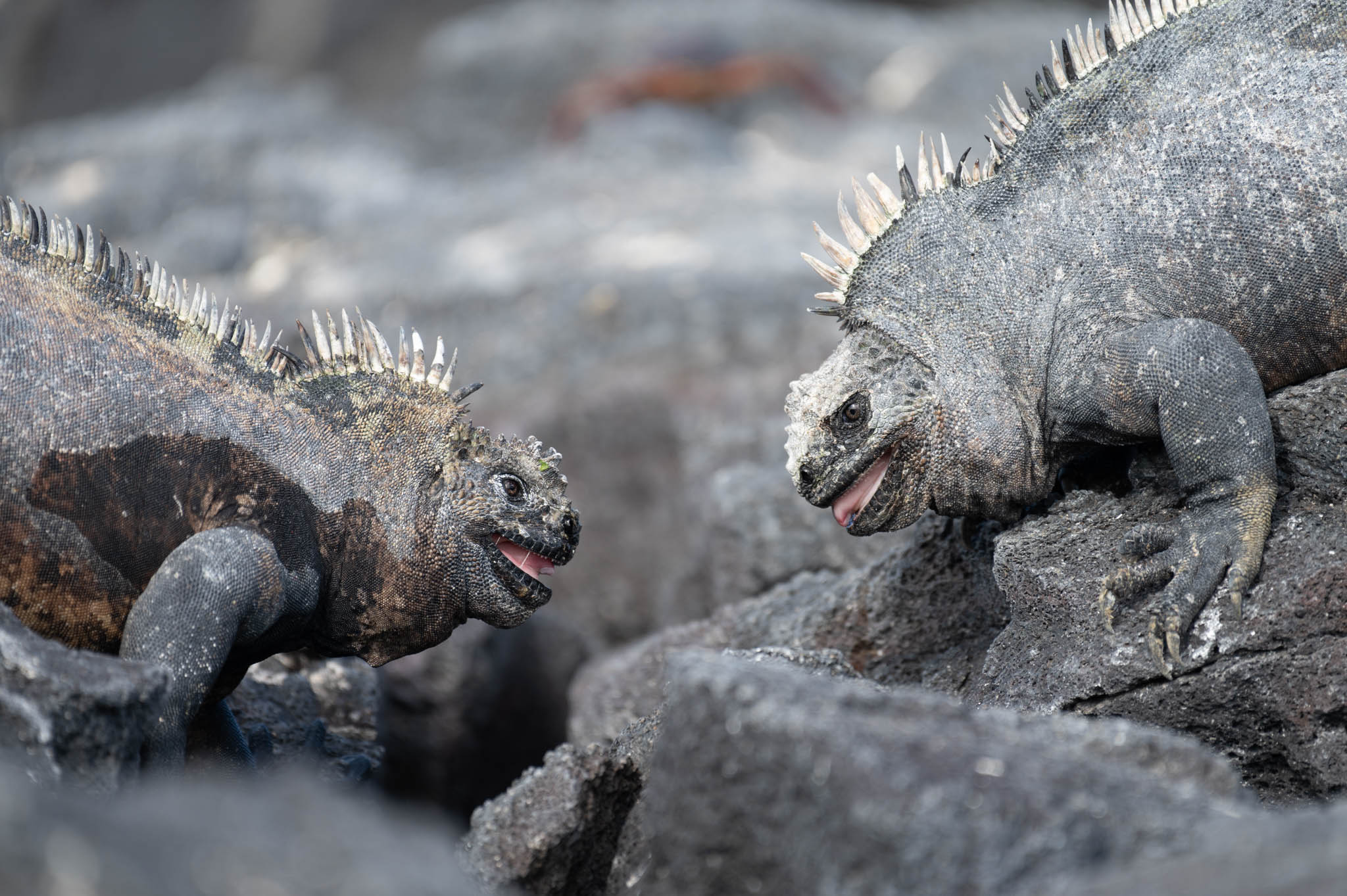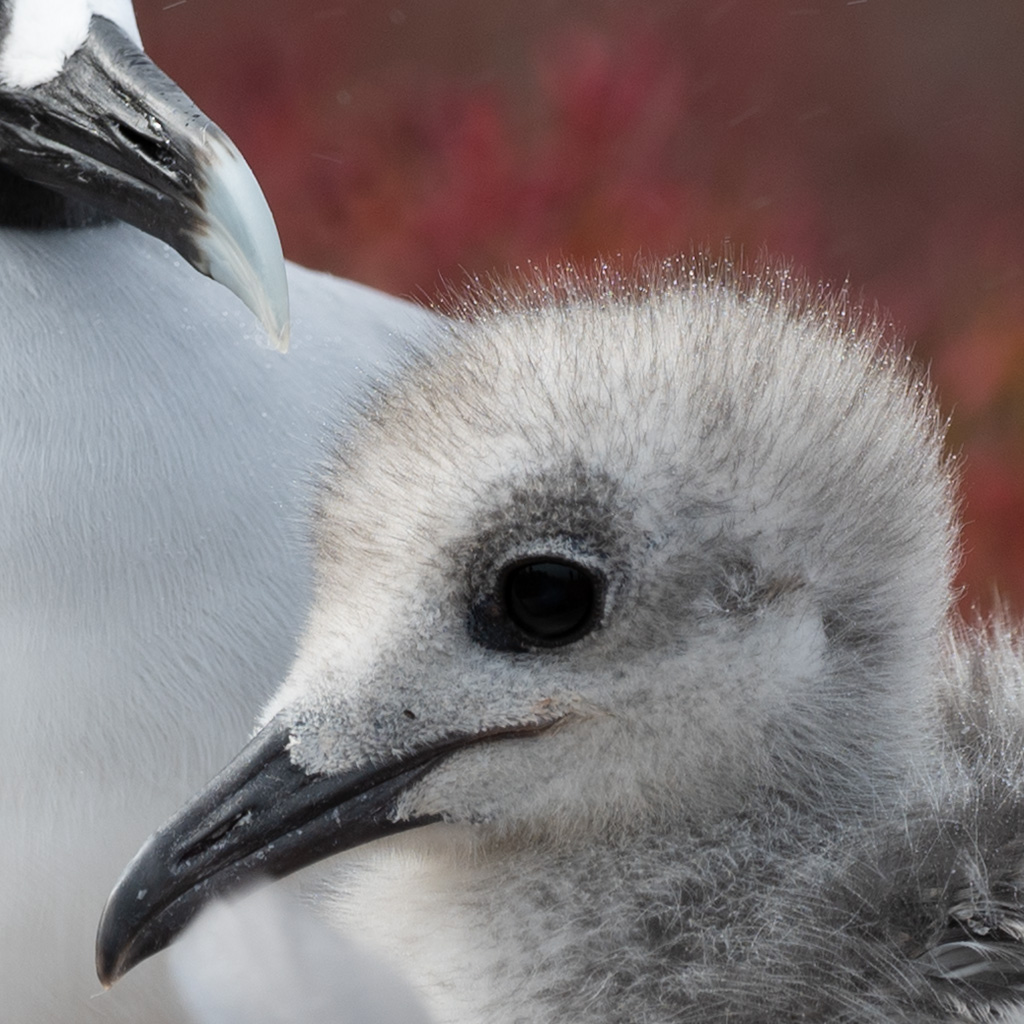The last time I did a major site redesign I eliminated almost all of the written content except post titles and picture captions. With another redesign that I’m still tweaking I decided to make an occasional blog post in a separate area from the image galleries. I don’t anticipate writing very often since I don’t add content all that often, but I might surprise myself.

Anyway, we had a great two week trip to the Galápagos in December with 6 nights on the beautiful and luxurious Celebrity Flora, and another 6 nights in the Santa Cruz highlands at the almost as luxurious and beautifully located Pikaia Lodge. I thought I had scratched the Galápagos off my bucket list decades ago, but that was back in the film era and this was a completely different experience. I wasn’t quite sure I’d enjoy a large(ish) cruise ship with ~100 passengers for this kind of trip, but they had plenty of options for shore excursions and more than enough staff to keep the onshore groups manageably sized.
Pikaia Lodge has a motor yacht they use for long daytrips to nearby islands, and we had smaller groups for the two we went on, both of which produced some unique images.
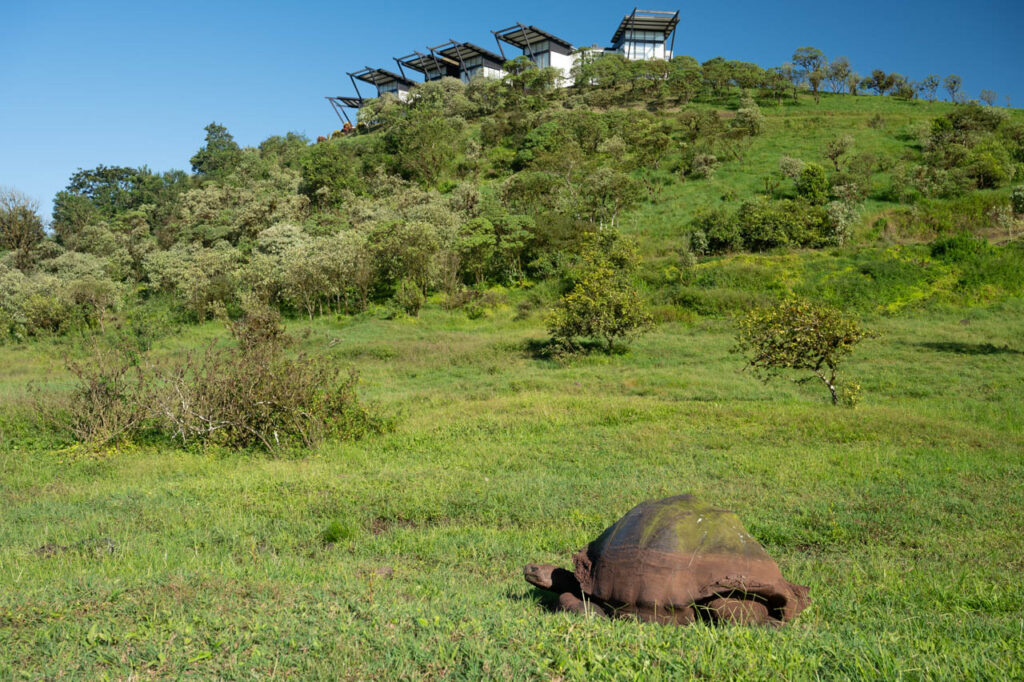
While I was prepping for the trip earlier in the fall I remembered that my Nikon D7100 DSLR is falling apart and possibly in danger of failing, so I convinced the wife to invest in a new camera body. I’ve had my eye on mirrorless cameras since seeing one in a Tokyo camera store a few years ago, and without giving a lot of thought to alternatives I decided to get a Nikon Z6 II with its 24-70 f/4 kit lens and adapter for Nikon’s F mount lenses. While I would have liked the extra pixels of the Z7 I didn’t want to pay the $1,000 extra right now. In any case the 24MP in the Z6 is plenty for display on any current computer monitor or prints as large as I’d be likely to make. It’s also the same as my D7100 but in a larger sensor format that’s equivalent in size to a 35mm frame — Nikon calls these FX and DX respectively, where DX is about the same size as APSc of film days.
What were alternatives that I should have considered? I could have made a more or less lateral move to the most recent iteration of the camera I have, which is the D7500. Not interested, although it is much less expensive than any of their mirrorless cameras. An upgrade that I would have seriously considered not long ago would be to the D850 in their FX DSLR line. That’s generally regarded as Nikon’s best camera for wildlife or just about anything other than sports, which I guess their flagship models (currently the D6) are optimized for. The problem with any DSLR is there are persistent rumors that they’re going extinct, with either the current products or perhaps a last generation of successors as the end of the line. Well, maybe that shouldn’t matter too much since I’m at an age where I could go extinct at any time too.
In the end I traveled with the Z6 II, which I acquired too late to thoroughly learn unfortunately, with its 24-70 f/4 Z mount lens, a 70-200 f/4 F mount Nikkor lens, and a 200-500 f/5.6 zoom. That covers the entire range from wide angle to super telephoto with just 3 lenses and in just about the minimum possible weight and space. Both of the long zooms are an F-stop slower than would normally be considered professional grade glass but they both have excellent optical quality. The 200-500 is also the least expensive lens in that focal length range in Nikon’s lineup by a fair margin. Maximum aperture isn’t as important with modern equipment as it once was. Autofocus speed and low light performance have steadily improved, and ISO settings can be pushed higher with minimal increase in noise.
For this trip I packed the camera with its kit lens and the 200-500 zoom along with the charger and an extra battery in a compact backpack that’s small enough to qualify as a “personal item” on most airlines. The 70-200 went into a small padded pack in checked luggage. I also carried a few filters, the essential USB cable, and a laptop with Adobe Lightroom installed that I otherwise would probably have left home.
Camera impressions: first, the metering is probably the most accurate of any Nikon camera I’ve had so far. I got perfect exposures of black and white birds with excellent detail at both ends of the tonal range. For example here’s one of my better bird portraits, of a family group of nesting Swallow-tailed Gulls:
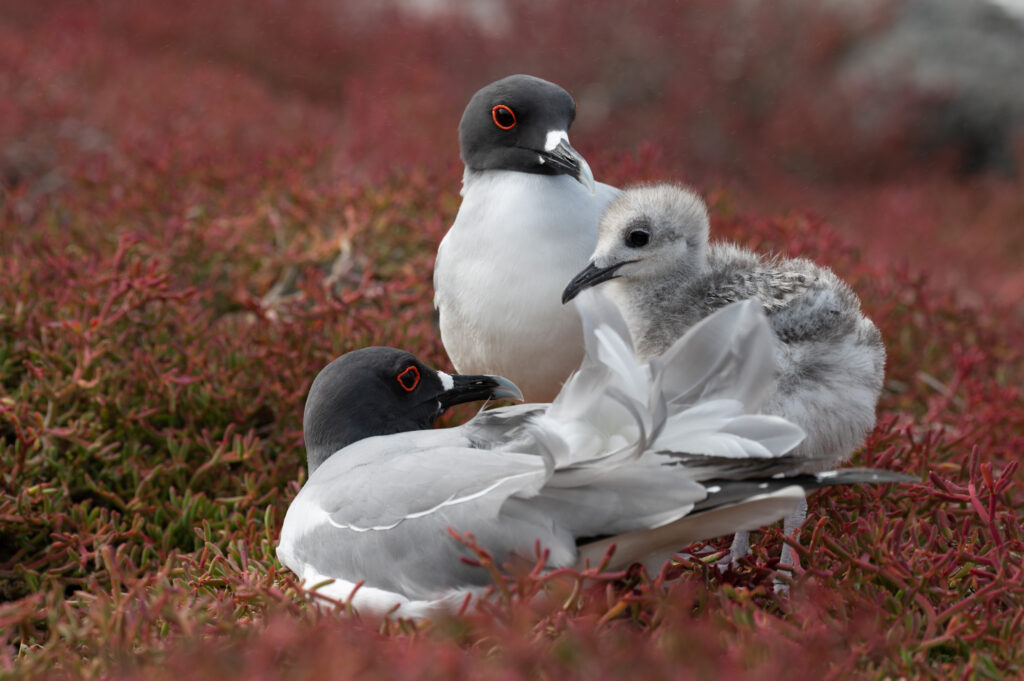
Zooming in, notice the plumage on both the white chests and dark grey heads. There was also very light rain or perhaps sea spray that’s visible in the background and on the chick’s feathers.
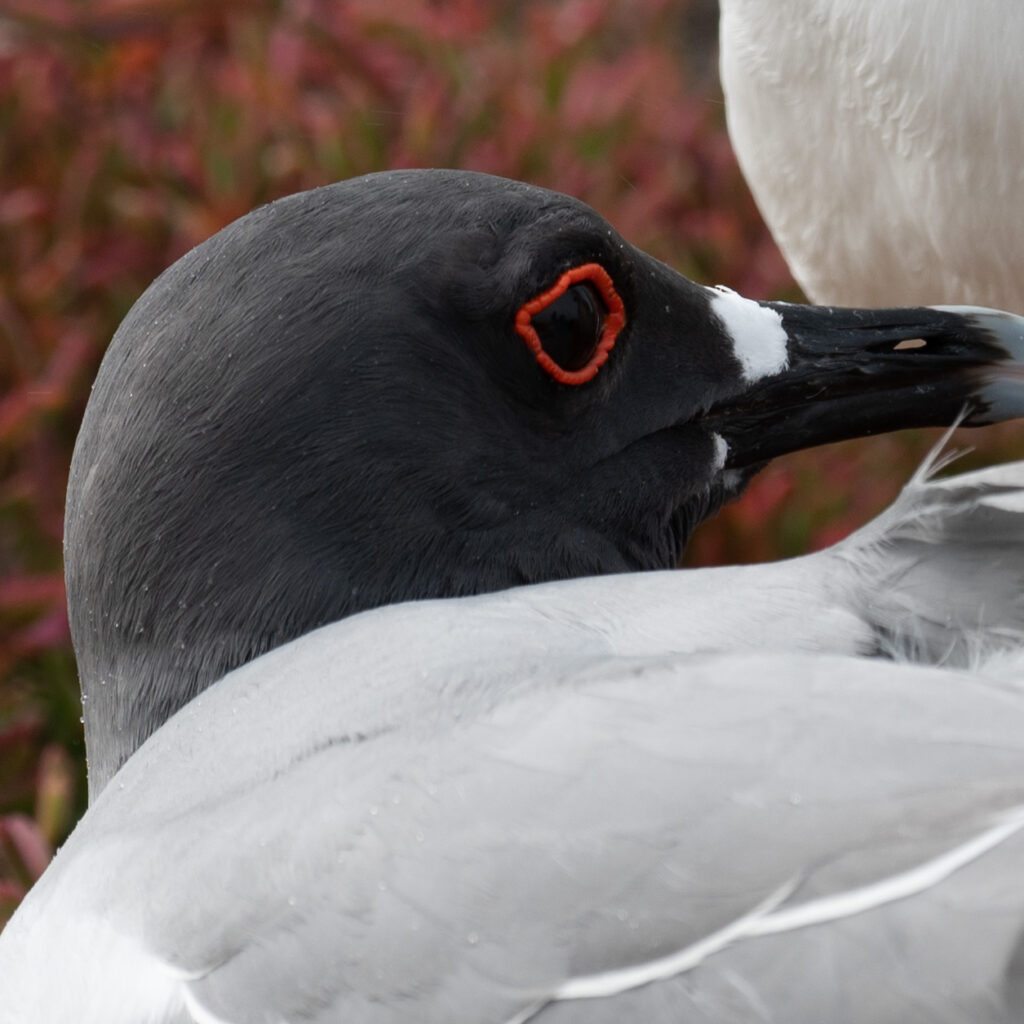
Autofocus performance was a little more hit or miss, although I mostly blame myself for that. I used “wide area AF” optimized for animals for almost all of my pictures. In this camera that mode is meant to be used for dogs and cats, and it seems it doesn’t work as well on lizards and birds. But when it works it’s fast and accurate. I got by far the best picture of Marine Iguanas in my 3 trips to the Galápagos this time on Fernandina Island. I was fortunate to see these guys getting ready to square off and was able to get in position to have them both in the plane of focus as they postured at each other and then backed off.
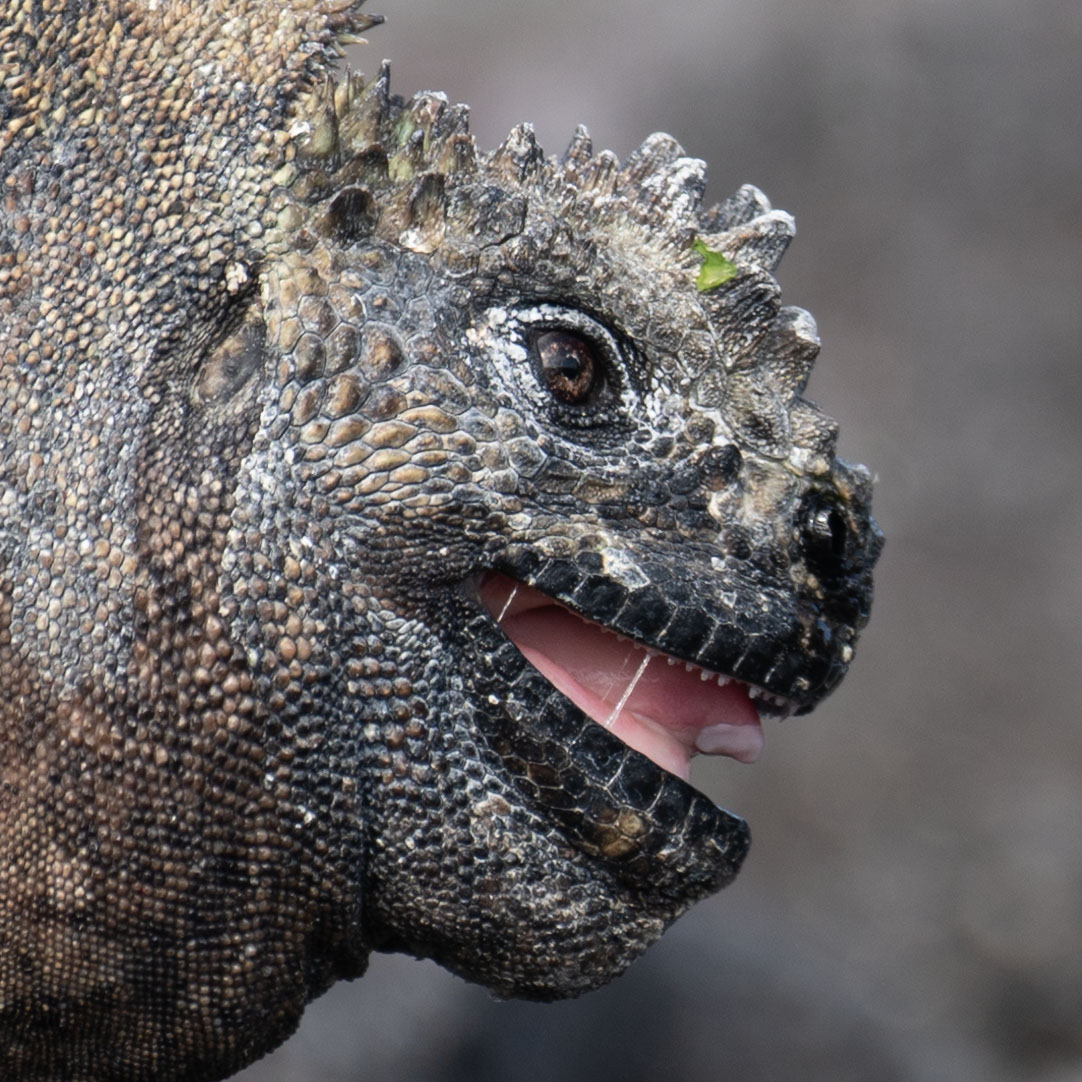
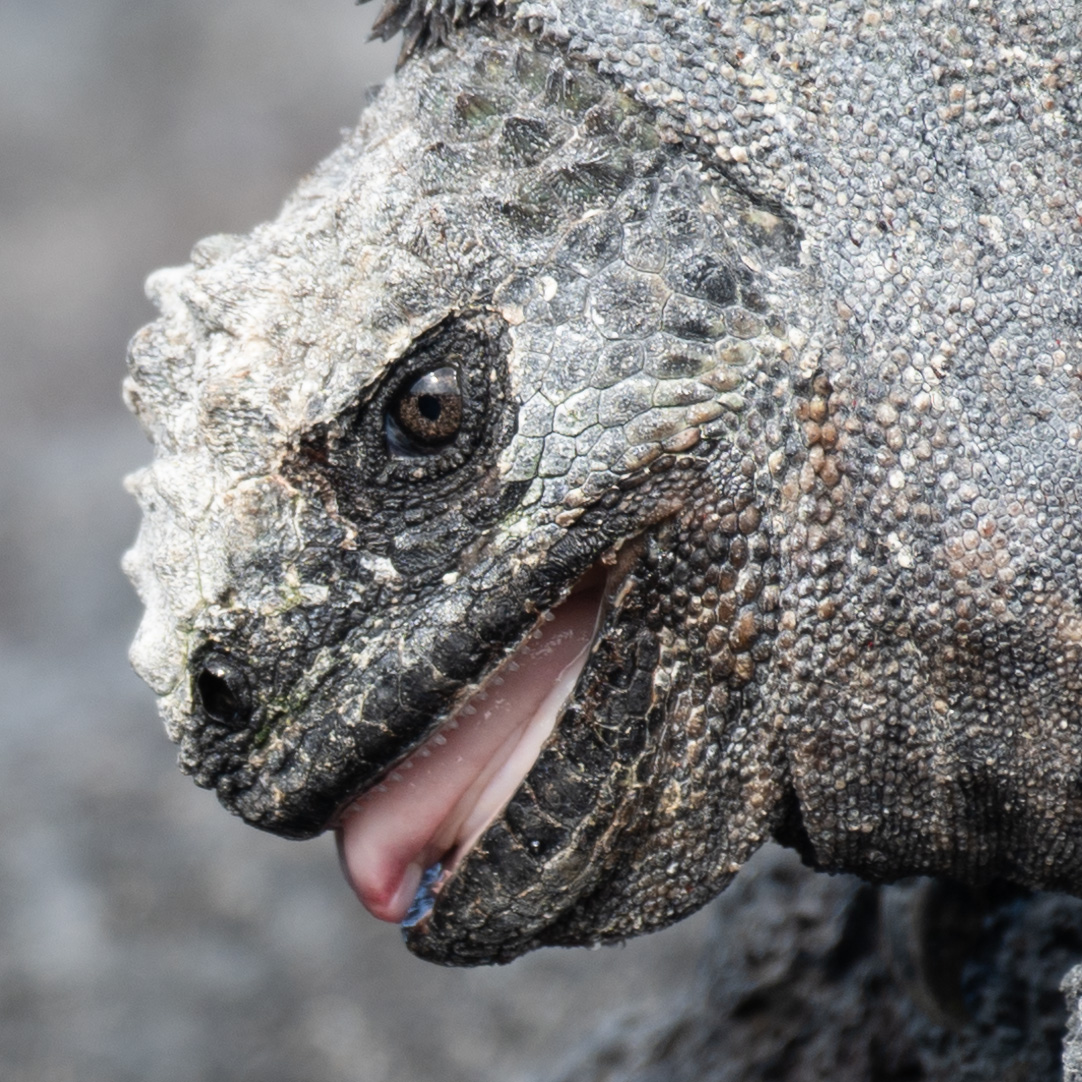
A few words about my shooting style and I’m done. First, I always record images in raw format at the highest available bit depth, which on this camera is 14 bits per channel. That offers maximum flexibility to adjust exposure, tone curves, white balance, etc. in postprocessing at the expense of course that postprocessing becomes an essential step in the workflow. No instant uploads to Facebook for me, which is OK since I don’t do social media. When shooting wildlife I almost always use aperture priority. I will bracket exposures when doing landscape photography, mostly so I can combine to HDR images. I didn’t do any bracketing this time. I always set a fixed ISO value rather than use automatic adjustment which this camera does offer. As a legacy of my film days I tend to use the lowest setting, which is 100 on this camera. There’s actually almost no penalty to using somewhat higher ISO values with the sensor on this camera, and I did occasionally adjust it. All of my shots with the 200-500 were taken with a monopod for support, and conversely everything I shot with the shorter lenses was handheld. This camera has built in vibration reduction and the two telephoto zooms have their own as well, but I get much more consistent results with some sort of support for a longer telephoto.
